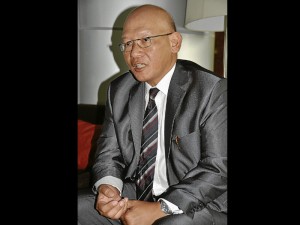LIFE OUTSIDE the mother’s womb didn’t start so well for 6-year-old Georgia. The first-born of Singapore-based Australian couple Michael and Louise Conn, Georgia was stuck in her mother’s birth canal for a prolonged period during birth, depriving her brain and body of oxygen.
As a result, Georgia’s brain suffered from an acute and extensive hypoxic injury, which rapidly progressed into cerebral palsy—a neurological disorder characterized by lack of control in body movement, muscle coordination and impeded brain development.
Louise described that Georgia had “up to 50 seizures a day, suffered a huge amount of pain, and was, in general, a very difficult baby,” adding, “it was all extremely physically and mentally distressing to not be able to do anything to help.”
But there was one thing going for Georgia, and it was all she needed to turn her luck around. The Conns were able to sign up and bank Georgia’s umbilical cord blood a week before she was born. As it turns out, cord blood stem cells, known as the building blocks of the blood and immune system, possess an uncanny ability to adapt, revitalize and replenish the blood and immune system by developing into red and white blood cells and platelets.
Possible ‘safety net’
Apparently, the Conns had known and researched about cord blood stem cells for years as a possible “safety net” for their future children. And when Georgia was born in Singapore, an organization named CordLife set in motion the process that ensured that safety net was in place when Georgia was in the brink of darkness.
In the Philippines, 20 babies are born with Georgia’s condition every day. The Cerebral Palsied Association of the Philippines estimates that for every 1,000 live births, 3.5 are affected with this disorder. And until the advent of stem cell research and therapy, cerebral palsy was considered irreversible and untreatable, a fact of life 300,000 Filipinos who suffer from it have to contend with.
Neurosurgeon Keith Yu-Ching Goh, however, offered a ray of hope when he met with Philippine media June 29 at the St. Luke’s Hospital in Bonifacio Global City, Taguig. Goh made medical history when he was among the first in Asia to successfully administer the stem cell treatment for cerebral palsy.
Infusion procedure

MORE OPTIONS, AT LEAST. CordLife Philippines medical director Faundo stresses the importance of storing cord blood stem cells. Photo by Tessa R. Salazar
He performed the cord blood stem cell infusion procedure on Georgia Sept. 8, 2009 in Singapore, wherein she received 80 percent of her own blood stem cells in 10 minutes.
Goh narrated that after two-and-a-half months of the infusion, Georgia exhibited better visual focus and eye contact with children and adults during play, and improved vocalization when she tried to recite nursery rhymes. Her posture and head control were enhanced, and she showed better coordinated movements.
Stem cell research and therapy had been available in the country as early as 2005, when CordLife Medical Philippines started operations at highly secure facilities in UP-AyalaLand TechnoHub in Quezon City.
Dr. Arvin Faundo, CordLife Philippines medical director, revealed during the June 29 press conference that the company has received numerous applications for banking of cord blood stem cells. He likened these applications to “insurance policies” that would ultimately help in treating the applicants of their future diseases, or in case they figure in a severe accident. He further explained that cord blood would have otherwise been just discarded material.
Cord blood stem cells can also be used to treat applicants’ immediate family members of their own diseases when the need arises. “The chance of locating a cord blood match within the family is 60 percent higher compared to a bone marrow match,” Faundo said.
He added that the diseases and medical conditions known to be treatable with stem cell infusion, or those undergoing clinical trials worldwide, include cerebral palsy, brain injury, stroke, heart and liver diseases, cartilage regeneration, eye disorders, spinal cord injuries and auto immune disorders. “Any family that has stored their children’s cord blood stem cells can be part of this medical revolution and will have more medical options available to them,” Faundo said.
Both doctors assured that the cord blood banking process is safe, easy and risk-free for the mother and baby. CordLife claims it has complied with the standards of the American Association of Blood Banks and is ISO-certified.
P22/day assurance
Media personalities Christine Bersola-Babao and Lexi Schultze, who were also on hand during the media conference, are staunch advocates of cord blood stem cell banking. Both women had their babies’ cord blood stored in the facility of CordLife Philippines (www.cordlife.com/ph).
Babao said it costs P22 a day, but well worth it for a lifetime of assurance for the family.
Suzanne Salindong, marketing head of CordLife Philippines, disclosed that the cost of cord blood banking is P40,000 up front, aside from the annual fee of P8,000 (or P22 a day). The up-front fee covers the cost of tests for maternal blood, cord blood unit, collection and transport, and the kit. This fee, she stressed, could be settled in flexible payment terms.


